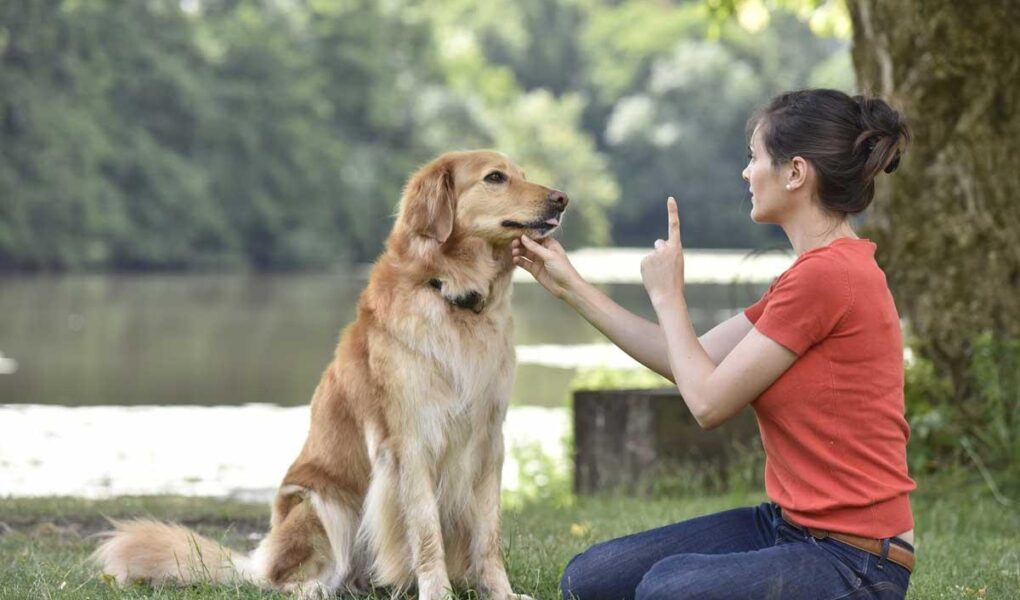Unleashing Potential: A Guide to Training Your Dog
Every dog owner knows the joy of watching their furry friend bound through a field, tail wagging and tongue lolling in pure happiness. But alongside those moments of joy comes the challenge of nurturing a canine companion that is not only loving but also well-behaved. Training your dog is not merely about obedience; it’s an enriching experience that lays the foundation for a strong bond between you and your pet. In this article, we will explore the principles of effective dog training—discussing the importance of communication, consistency, and patience, while offering practical tips to help you teach your dog essential commands and behaviors. Whether you’re welcoming a lively puppy into your home or seeking to refine the skills of your older dog, the journey of training is both rewarding and vital. Let’s embark on this adventure together, unlocking the full potential of your four-legged friend.
Table of Contents
- Understanding Canine Behavior for Effective Training
- Essential Techniques for Positive Reinforcement
- Creating a Structured Training Routine
- Socialization: Key to a Well-Adjusted Dog
- Q&A
- Future Outlook
Understanding Canine Behavior for Effective Training
To effectively train your furry companion, it’s essential to understand their natural instincts and behaviors. Dogs communicate primarily through body language, vocalizations, and their reactions to stimuli in their environment. By observing their posture, tail position, and facial expressions, you can better interpret their emotions and needs. Here are some key points to consider:
- Play Behavior: A wagging tail and playful bow often indicate a desire for fun. Utilize this to engage your dog during training sessions.
- Social Hierarchy: Dogs are pack animals and thrive on structure. Establishing yourself as a confident leader can enhance your training efforts.
- Fear Responses: Recognizing signs of anxiety, such as cowering or tucked tails, can help you modify your training approach to create a more positive experience.
Training should also involve positive reinforcement, as this aligns with your dog’s natural learning process. Rewarding desired behaviors with treats, praise, or playtime encourages repetition of those behaviors. Here’s a simple table to illustrate effective training techniques:
| Training Technique | Description |
|---|---|
| Clicker Training | A method using a click sound to mark correct behaviors, followed by a reward. |
| Positive Reinforcement | Encouraging desired behavior with rewards to increase the likelihood of the behavior recurring. |
| Consistency | Using the same commands and rewards helps your dog understand expectations. |
Essential Techniques for Positive Reinforcement
When it comes to cultivating a positive training environment for your dog, it’s essential to focus on reinforcement techniques that encourage desired behaviors. Here are some key strategies to consider:
- Timing is Everything: Immediate rewards reinforce the connection between behavior and consequence, making it crucial to reward as soon as your dog performs the desired action.
- Use High-Value Treats: Different dogs have different preferences; know what motivates your pet and use those treats during training.
- Keep Sessions Short: Dogs have limited attention spans, so aim for multiple short sessions rather than long, drawn-out training times to maintain interest.
Additionally, maintaining a positive and upbeat demeanor during training can significantly impact your dog’s receptiveness. Try incorporating these additional techniques into your routine:
- Vary Your Rewards: Alternate between treats, toys, and verbal praise to keep your dog engaged and excited.
- Incorporate Playtime: Integrate games like fetch or tug-of-war after a successful training session to reinforce the bond and make training feel fun.
- Celebrate Small Wins: Recognize and reward small advancements in behavior, ensuring that your dog feels encouraged to continue learning.
| Technique | Description |
|---|---|
| Clicker Training | Use a click sound as a marker for correct behaviors, followed by a reward. |
| Reward-Based Training | Focus on rewarding behaviors you want to see rather than punishing unwanted ones. |
| Ignore Unwanted Behavior | Redirect and ignore rather than scold; this discourages negative attention-seeking. |
Creating a Structured Training Routine
To establish a successful training routine for your furry friend, it’s essential to create a consistent schedule. This means setting aside specific times each day for training sessions. Aim for short, focused training periods, typically lasting 5 to 15 minutes, to ensure your dog remains engaged and receptive. Consider using a variety of training methods, such as positive reinforcement and clicker training, to keep things exciting. A well-structured routine might look like this:
| Time | Activity |
|---|---|
| 8:00 AM | Morning Walk & Basic Commands |
| 1:00 PM | Interactive Play & Trick Training |
| 6:00 PM | Leash Training & Socialization |
In addition to your scheduled sessions, incorporating training into daily activities can reinforce learning. For example, ask your dog to sit before meals or to stay while you open the door. This method consistently reinforces their training throughout the day. Moreover, tracking progress can be beneficial. Utilize a simple checklist to monitor which commands your dog masters, helping you tailor your routine accordingly. By combining structured training sessions with real-life practice, you create a holistic approach that enriches your dog’s learning experience while strengthening the bond between you.
Socialization: Key to a Well-Adjusted Dog
One of the most essential elements in fostering a happy and well-adjusted dog is socialization. Exposing your dog to various environments, people, and other animals from a young age can significantly reduce anxiety and fear-related behaviors later in life. Start by taking your pup on outings to the park, social events, or even pet-friendly stores. Make the experience enjoyable and rewarding by using positive reinforcement. Remember, the goal is to gradually introduce new experiences without overwhelming them. Consider incorporating the following socialization activities:
- Group Classes: Attend obedience or agility classes to help your dog interact with other pets and owners.
- Playdates: Arrange playdates with friendly, vaccinated dogs to encourage safe and enjoyable interactions.
- Public Outings: Walk with your dog in different settings, like urban areas or nature trails, to expose them to varied sights and sounds.
Tracking your dog’s socialization progress can be greatly beneficial. Use the following table to monitor key interactions and experiences that can shape their behavior:
| Date | Activity | Reaction | Notes |
|---|---|---|---|
| 09/01/2023 | Dog Park Visit | Curious | Engaged well with other dogs. |
| 09/10/2023 | Pet Store | Excited | Loved meeting new people. |
| 09/20/2023 | Neighborhood Walk | Relaxed | Handled noises well. |
Socialization builds your dog’s confidence, making them better suited to adapt to changes in their environment. By engaging with a variety of stimuli and experiences, you can raise a dog that is not only well-mannered but also enjoys a rich and fulfilling relationship with you and other beings. Foster these interactions throughout your dog’s life; continuous exposure will reinforce their confidence and adaptability.
Q&A
Q&A: Your Guide to Training Your Dog
Q: Why is training my dog important?
A: Training your dog is crucial for several reasons. It helps establish a strong bond between you and your pup, enhances communication, promotes good behavior, and ensures your furry friend is safe in different environments. A well-trained dog is happier and more confident, which can improve their overall quality of life.
Q: What’s the best age to start training my dog?
A: While you can start training a dog at any age, early socialization and basic obedience training are most effective when begun between 8 to 16 weeks. Puppies are like sponges; they readily absorb new information during this critical window. However, older dogs can learn too—it’s never too late to train!
Q: What are some basic commands I should teach my dog first?
A: Focus on fundamental commands like “sit,” ”stay,” ”come,” and “down.” These commands are essential for basic obedience and reinforce your role as a leader. Additionally, teaching “leave it” can prevent undesirable behavior and help keep your dog safe.
Q: What training methods work best?
A: Positive reinforcement is widely regarded as the most effective training method. This involves rewarding your dog with treats, praise, or playtime for desired behaviors. Avoid punishment-based tactics, as they can lead to fear and anxiety, ultimately damaging your bond.
Q: How long should training sessions be?
A: Effective training sessions should be short and focused, typically lasting 5 to 15 minutes. Dogs have limited attention spans, especially puppies, so keeping sessions brief helps maintain their interest and enthusiasm. Consistency is key—regular daily training will yield better results than lengthy, infrequent sessions.
Q: What if my dog doesn’t respond to training?
A: If your dog is struggling to respond, it’s essential to evaluate your approach. Ensure you’re using positive reinforcement and the right rewards that motivate your dog. Be patient and persistent, as every dog learns at their own pace. If difficulties continue, consider seeking advice from a professional dog trainer.
Q: How can I socialize my dog during training?
A: Socialization is an integral part of training. Introduce your dog to a variety of environments, people, and other animals in a controlled manner. Puppy classes, dog parks, and group training sessions provide excellent opportunities for socialization while you reinforce training commands in a real-world context.
Q: Are there activities that can reinforce training?
A: Absolutely! Engaging your dog in activities such as agility courses, obedience competitions, and interactive games can solidify training skills. These not only reinforce learned behaviors but also serve as a fun way to bond and exercise your dog, preventing boredom and destructive habits.
Q: What’s the biggest mistake dog owners make during training?
A: One major mistake is inconsistency in commands and rules. For example, if “off” means jumping on people one day and not the next, your dog will become confused. Establish clear rules and ensure all family members are on the same page with commands and desired behaviors for a unified approach.
Q: When should I seek professional help for training?
A: If you encounter behavioral issues that seem overwhelming, such as aggression, anxiety, or excessive barking, it may be time to consult a professional dog trainer or a behaviorist. Early intervention can prevent problems from escalating and will provide you with tailored strategies for your dog’s specific needs.
By investing time and effort into training your dog, you’re not only teaching them essential skills but also enriching their lives and fostering a deeper connection between you both. Happy training!
Future Outlook
training your dog is a journey that fosters a deeper bond between you and your furry friend. It’s not just about teaching commands or correcting behaviors; it’s about building trust, enhancing communication, and enriching your dog’s life. Remember, patience and consistency are your greatest allies in this process. Celebrate the small victories and embrace the challenges, for each moment spent in training is an opportunity for growth—for both you and your dog. As you embark on this rewarding adventure, may the lessons learned and memories made strengthen the unique partnership you share. So, gather your treats, don your patience hat, and embark on a journey that will not only train your dog but also create a lifelong companionship filled with love and understanding. Happy training!



